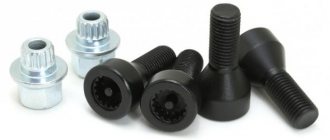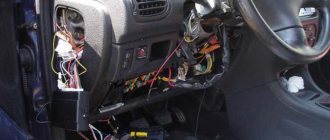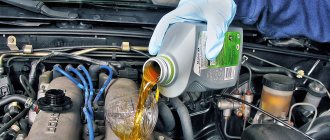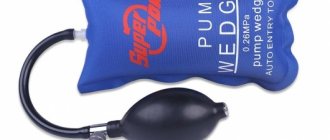Do I need to push the car?
In order to be fully armed and not get into trouble in an unforeseen situation, any car owner must know how to start a car from a pushrod and what nuances need to be taken into account. First, you first need to understand whether it makes sense to push your car at all. To understand this, you need to pay attention to the operation of the starter . If the starter cranks the engine, but it still won’t start, there’s no point in pushing the car. Most likely, your car has run out of fuel, or there is a problem with the engine itself . Before you begin the process itself, you need to take into account the individual characteristics of your vehicle, such as the type of transmission and the type of engine itself.
Emergency charging, or How long to charge a car battery to working condition
Naturally, it is best to charge the battery in a mode that is gentle on it. But it happens that a discharged source has recently been discovered, and it is simply necessary to go. There are several ways to restore capacity in a short time : .
- Increased charger charging current for 20 minutes.
- The use of a simple electrical circuit in the absence of a charger.
- Using the device for emergency charging.
You need to know that the first option leads to intense wear of the plates and such procedures cannot be carried out frequently. Using a powerful diode or diode bridge together with any load (for example, in the form of a 200 W electric lamp) will help revive the battery if you don’t have an industrial “charger” at hand. By using a 1 kW heater instead of a lamp, you can activate the process. This method should be used only as a last resort and with special care - the parts are live! All of the above methods, including starting devices, are applicable if you have an ordinary outlet, even if not in the garage. What to do if the battery is dead, and how to start the car away from power lines? For such a case, modern industry produces portable power sources for restoring the standard battery, which are connected to the cigarette lighter socket. The manufacturer assures that a completely dead battery will be able to start the engine within 20 minutes. Reviews about this “device” are quite contradictory and, I think, not without reason. Therefore, let's consider alternative methods. Options for starting the engine in urban conditions The presence of city traffic greatly simplifies the task of “revitalizing” your vehicle, because in such conditions it is not difficult to find someone to push, take in tow or give you a light. Another question is how to use this correctly?
or tug
A few sympathetic volunteers - and now the engine is already “living.” But to prevent the “familiar words” of these kind people from being addressed to you, while in the cockpit, you should coordinate your actions according to the following scheme:
- Turn on the ignition.
- Depress the clutch pedal.
- Engage 2nd gear.
- When good acceleration is achieved, release the clutch pedal.
Now one could say that no matter how much you charge a dead car battery, a couple of people are better. But, unfortunately, for cars with automatic transmission or CVT, this method will not work, just like trying to start the engine from a tow.
The actions in the presence of a second vehicle are similar to those described above, with the only difference being greater caution so as not to “ram” the front car.
“Light up” from a car with a working battery
The method is applicable to vehicles with any type of transmission. To start a car with a dead battery using wires and a second donor car, let’s familiarize ourselves with the procedure :
- Turn off the donor vehicle and turn off the ignition.
- Unscrew the negative terminal of the discharged battery.
- Connect the positive terminals of both batteries with a “positive” cable.
- Connect the “negative” cable to the negative terminal of the donor and to the “ground” of the vehicle with a discharged battery.
- Try to test start a cold engine; if unsuccessful, repeat the procedure. In this case, you should pay attention to the operation of the starter; in case of effective “lighting”, it should spin the flywheel well, but if the car does not start, then you should look for other reasons.
- Disconnect the wires in reverse order.
- Connect the negative terminal to the reconditioned battery.
As the list above shows, the procedure is not so simple, although it does not require knowledge of how long to charge a “dead” car battery. The sequence of actions must be strictly followed , otherwise for cars “charged” with electronics, a good deed can turn into an expensive repair.
Let’s consolidate our knowledge of “lighting up” with the help of a video:
Particular attention should be paid to the choice of wires for the “lighting up” procedure. The cross section for gasoline models is recommended to be at least 25 mm, for diesel models - 35 mm. Naturally, the cables must be copper and equipped with reliable clamps. The capacities of both batteries must match. For example, the “ten” will not be able to start a Land Cruiser, especially a diesel one, unless it stops starting on its own.
Is it possible to start an automatic machine from a pusher?
How to start a car with automatic transmission using a pushrod
If your car is automatic, it is better to leave theories alone and resort to towing.
There is a lot of controversy regarding automatic cars. However, starting a car with an automatic transmission using a pushrod is only possible in theory. But in practice, the technical features of cars with an automatic transmission do not provide a rigid connection between the power unit and the gearbox when the engine is turned off. Thus, no matter how far you push your car, it will not start, and the transmission itself may suffer. There is a theory on how to start a car automatically using a pushrod. To do this, you need to turn on the ignition, move the gearbox lever to the N-position and accelerate the car to 50 km/h. The selected speed must be maintained for 10 minutes, then move the gear shift lever to one of the positions - 2,3,D. In theory, the engine should start working, but any sane person understands perfectly well that pushing a car at a speed of 50 km/h, let alone 10 minutes, is simply not realistic. Therefore, if your car is automatic, it is better to leave theories alone and resort to towing. When towing a car with an automatic transmission, you should use the method described above and follow the necessary safety precautions.
How to make engine starting predictable?
The battery is dead, but we have to go!
This situation often arises unexpectedly. Of course, there is a traditional way to start in such situations, what is called “from the pusher”. But this method is effective for carburetor engines, and experts do not recommend this method for starting an engine with fuel injection.
It is difficult to start a car with an automatic transmission in this way. To start, you need to accelerate the car to 30 km/h with a warm transmission, setting the gearbox selector to position N, and when cold, generally up to 50 km/h, and tow at this speed for at least 3-5 minutes. If the power brakes and power steering in a towed car are not working, this is not an easy task, but the main thing is that the method does not guarantee a start.
Diesel engines are not recommended, since if the gear is incorrectly selected, very large loads are applied to the timing drive, which can easily damage the timing belt. After such a start, the motor may require expensive repairs.
The “lighting up” method is more convenient; it does not “injure” either the injection engine or the diesel engine. But not all drivers carry with them a set of cables to connect to someone else’s battery, and many do not agree to help in such a situation, fearing for the fate of their car’s electronic devices. After all, if you do not strictly follow the “lighting up” technology, you can damage the on-board computer and get other troubles with electronics.
Is it possible to insure yourself?
In order to avoid “surprises” when starting the engine, you need to use rechargers that maintain a normal battery charge during long-term parking, especially in severe frosts. Such recharges are designed to last for weeks and even months. For example, chargers of NPP "Orion" (St. Petersburg) "Vympel-05" and "Vympel-07". The devices weigh only 200 g and can automatically support the so-called. buffer mode, which allows you to store any types of car batteries charged for a long time. VRLA batteries have charging characteristics, and Orion R&D devices take this into account. The Vympel-30 charger even has a special charging mode for calcium batteries (Ca/Ca), which is, in general, rare.
But what if there is no outlet nearby?
But often the driver simply does not have the opportunity to connect a charger with a buffer charging mode. And when you leave your car on a winter street, you don’t want to remove the battery every time and take it to a warm room. What then? The car owner risks finding himself in a situation where the power of his battery is not enough to turn the crankshaft in thickened oil with the starter. And in this case, starting (PU) and starting-charging devices (ROM) can help.
To start the engine when the battery is discharged, the motorist can use an autonomous starting device, which is capable of providing multiple starts of the engine and does not require connection to an external network. Such devices are presented on the Russian market, in particular, by Sorokin Trading House. Autonomous launchers with a starting current of 450, 600 and 900 A can start the engine in subzero temperatures with a practically discharged battery, having previously recharged the battery for 5–10 minutes. The engine starts at a voltage that is safe for the on-board computer and other electronic systems, including the battery.
High-quality autonomous PUs of various capacities are supplied to the market by the Italian company Telwin, which has been producing welding equipment and chargers for more than half a century. Thus, the BlueWeld Speed Start 1812 starting device can, using a starting current of 1500 A, start the engine of not only a passenger car, but also a truck or tractor, and to restore potential, the device is connected to a 220 V network or charged from the cigarette lighter in the car.
Often, autonomous launchers are equipped with additional equipment. The Latvian company SIA RESANTA supplies the Resanta PU-2 PU, which, according to the manufacturer, is capable of providing a starting current of 400 A. The device is also equipped with a compressor providing pressure up to 17 bar, and a 5-volt USB connector for charging various devices. The heart of the device is an innovative battery with a capacity of 17 Ah.
Today, online stores offer numerous types of miniature starting devices, so-called. jamstarters. Mostly the jamstarters presented in Russia are made in China - GT, RS, Tenex, Karbonn, Vitol, etc., but there are devices from other countries, for example, Whistler starters are assembled in the Philippines.
Using a jam starter without external power, you can charge a mobile phone, provide 19 V for running a laptop, and even start a car in warm weather. At the same time, the percentage of defects among these products, as they say, is off the charts, the parameters declared by the manufacturers are practically not maintained in any “product”, and the question of the service life of these PUs remains open.
And the ROM is better!
In order for the operation of the battery to be stable and reliable, the battery must be maintained and charged on time. During long stops or short trips with frequent starts, charging from the on-board generator may not be enough, and here the driver cannot do without a starting charger.
ROMs relieve the battery from high starting loads, especially in winter, when starting for natural reasons can be difficult: when the temperature drops, the density of the electrolyte increases, and the starting current drops, the battery capacity may decrease
half. However, the processes of self-discharge and sulfation affect the battery all year round, which means that starting problems due to a dead battery are an all-season phenomenon. Of course, it is undesirable to travel with a nearly discharged battery, but if the battery is approximately 50% discharged and produces a voltage of about 12.3 V, then you can hope that the car’s alternator will recharge it during the trip.
Today, the market offers ROMs for starting engines and charging small-capacity batteries, 30–100 A/h, used in passenger cars. For professional use, more powerful devices have been developed that can charge batteries with a capacity of 300, 400, 500 and 600 Ah and even several powerful batteries at the same time.
Combined ROMs are also offered today. For example, the recent development of the Airline company is the AJS-W-03 ROM with three operating modes. It is used as a control unit for cars with an on-board 12/24 V network. In addition, AJS-W-03 charges 12/24 V batteries, the device is also capable of charging a 24 V assembly of several batteries. The device can operate in welding machine mode with a maximum welding current of 180 A.
Choosing a “rescuer” for yourself
The parameter that is of utmost importance when choosing a ROM is the inrush current, also called the cold cranking current CCA. This parameter is usually reflected on the battery cover indicating the method for obtaining the current value - BCI, DIN or IEC, valid in a number of European countries, corresponding to the Russian GOST R 53165-2008; on American batteries the starting current is indicated according to SAE.
As a rule, a battery, even a significantly discharged one, still has some power, and to start the engine it only needs the help of the ROM in the form of an additional impulse. For example, if a starting current of 540A(EN) is required to start the engine, and a standard battery has lost 45% of its power in the cold and instead of a starting current of 540A(EN) indicated in its characteristics, it can produce no more than 297A, then for starting The engine requires a ROM that can compensate for the drop in power, in this case providing a starting current of at least 243A(EN).
Before purchasing, be sure to find out the value of the ROM inrush current. For example, ROM T-1013R, produced by JSC Avtoelektrika (the device can diagnose car starters and generators and even carry out desulfation, i.e. restore battery capacity), is of little help in case of a dead battery. The device provides a short-term supply of starting current of only 100 A. This device will not be able to recharge a battery whose voltage has dropped to 6 V; the T-1013R protection will automatically turn off the voltage supply to the battery.
Many manufacturers simply deceive the buyer by inflating the parameters of their products indicated in passports or on instrument panels. The author even came across the fact that on the body of the TCB90 Futomatic device made in the People's Republic of China it was reported that it was a ROM, but in fact the device was an ordinary household “charger”.
Experts advise purchasing a ROM with a starting current that is necessary to start the engine, or better yet, even exceeds it, since ROMs work for decades, and the driver can change the car to a more powerful one, which requires a higher starting current to start.
Considering also that the ROM charges the battery, it is necessary before purchasing to determine whether the device can effectively charge the type of battery being used. The charging process for maintenance-free AGM or Ca/Ca batteries has its own specifics, and only WET batteries do not require a special approach. In some ROM models, for example Aggressor AGR/SBC-150Start, it is possible to set the charging mode corresponding to a particular type of battery.
Also, before purchasing a ROM, you need to know whether the device will be used in a garage or kept in the trunk. In the first case, you can buy a device whose main element is a powerful transformer. Transformer ROMs have some advantages: they are reliable, simple in design, repairable, and do not create radio interference during operation. But at the same time they have a large mass, consume metal, and have impressive dimensions, especially high-power ROMs.
Electronic digital devices, the basis of which is a circuit based on microprocessors, are gaining increasing popularity today. The devices automatically select the optimal charging mode. Unlike transformer ROMs, the battery is charged using a pulsed current, which has a positive effect on the quality of charging: the process is faster, and overall less energy is required.
In addition, pulse ROMs have a much smaller mass compared to transformer ones, while at the same time the reliability of pulsed devices is quite comparable to the reliability of linear stabilizers. Pulse devices operate quieter and, as a rule, have built-in protection circuits against unforeseen situations, such as short circuit, incorrect connection, lack of load at the output, etc. And, most importantly, the efficiency of pulsed “chargers” reaches 98%.
How to start the engine correctly?
To begin with, the ROM “crocodiles” are connected, naturally observing the polarity, to the battery terminals. Further, certain nuances arise. If the battery is only slightly discharged and it just needs a little help, then turn on the ROM in the “Start” or Start mode and start the car with the starter. In this way, the engine is started using a ROM with a starting current at the level of the car's starting current or slightly lower.
If the ROM produces a small starting current, then before starting, you should recharge the battery briefly, for about 10 minutes, setting the charging current to 15–20 A. In general, it is advisable to recharge any heavily discharged battery with a powerful current before starting. Some ROMs have a 5-minute boost charge feature. A powerful current of up to 50 A briefly, for no more than 15 minutes, restores the battery capacity, and together with the ROM enabled in the Start mode, the engine starts.
The characteristics of each starting device include recommended start and pause cycles. For example, for the Start-500 ROM, it is recommended to take at least a two-minute pause after closing the machine circuit for 3 seconds. In general, the engine starting procedure using ROM can be performed no more than 3–5 times in a row. If the engine does not start, you must stop trying and look for the cause of the malfunction, otherwise you can damage both the battery and the starter.
After starting the engine, the ROM should be disconnected - the combined operation of the car generator and charger can lead to overcharging the battery.
How to start a car with a manual pushrod
Before you deal with the question of how to properly start a car from a pushrod with a manual transmission, you need to take into account an important aspect - whether you have a carburetor or an injector. So, in order to start a car with a carburetor, you need to:
In order to start a car from a pusher, you should follow a fairly simple algorithm of actions.
- turn on the ignition - this activates all systems of your car; depress the clutch; turn on second or third speed; press the gas pedal several times (no more than 2-4 times, otherwise you will flood the spark plugs), or turn on the choke (if there is one); you can start pushing the car; as soon as the car accelerates to the required speed (8-10 km/h), you need to very smoothly release the clutch pedal; The engine should start, now you need to squeeze the clutch and stop the car, put the pushers in and continue driving.
In the case of an injection car, you need to carry out all the same manipulations, with the exception of turning on the second/third speed.
note
It is worth noting that starting a car from a pushrod is unsafe even for a manual transmission. The fact is that after such actions you risk breaking the timing belt.
But this is fraught with expensive engine repairs. Therefore, if you have a manual car, use this method of starting the internal combustion engine only in extreme cases, and in the case of an automatic transmission, do not use it at all.
Is it possible to start a diesel engine from a pusher?
Before you try to start a diesel engine from a pusher, you need to take into account the possible unpleasant consequences for your car. If done incorrectly, attempting to start the engine from a pushrod can cause a number of serious damage, including timing belt problems. But if you still decide to resort to this method, then you need to act according to the method described above, that is, by analogy with carburetor cars. With the only amendment, it is better to start the engine in higher gears (3rd-4th gear).
How to start a car with a pushrod alone
To start a car from a pusher, one will have to work hard, showing a certain dexterity and coordination of movements.
If you have several passengers in the car or you are on a section of the highway with busy traffic, then you will not have any problems with how to start the car from a pusher. But there may be situations when you are left alone with problems with your car. And how to act in such a situation? Firstly, do not be upset, even alone, if you wish, you will cope with the task, although it will not be entirely easy. In principle, you need to act according to the scheme already described, taking into account the fact that you will also need to accelerate the car yourself. To do this, turn on the ignition, open the driver's door and get out, with one hand we adjust the direction of movement of the steering wheel, and with the other we try to accelerate the car to the required speed. As soon as the speed is reached, jump into the car and start the engine. But you need to look at things realistically; not every man can cope with a difficult physical task, not to mention girls. Therefore, it is better to try asking for help from passing vehicles and resorting to towing, or calling and calling maintenance personnel.
Some useful tips
Before you push start your car, you need to take into account all the features of your car, since incorrect actions can lead to serious problems.
- If the battery is not completely discharged, you can use a push starter. When pushing a car, you should not position yourself in front of the exhaust pipe - strong exhaust can get you dirty. Always carry a halyard or tow rope in your car. Specialized wires can be used to “light” another car without resorting to the “push” method. Before you try to push start the car, you need to take into account all the individual characteristics of your vehicle. Since incorrect actions can lead to serious damage, the repair of which will not only take time, but will also not be so cheap. Therefore, it is good to weigh all the pros and cons, and only after that, resort to a similar method and follow all the above recommendations, then you can avoid a number of serious problems. On snow, gravel, sand, dirt surfaces, or when the treads on the tires are worn out, it is better to engage third gear to prevent wheel slipping.











